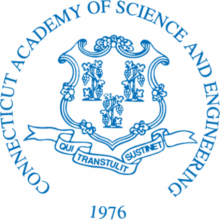The boy was only fifteen when he was arrested and sent to Mauer bei Wien, a Nazi labor camp. A few weeks later he was released, only to be rearrested and with his father, packed on a train headed toward Dachau, one of Hitler’s infamous concentration camps. The boy convinced his father to jump with him from the train. Hiking through the dangerous countryside, they managed to find their way back to Vienna. Sadly, the Nazis found his father and sent him to an internment camp in Poland and that was the last time the boy saw his father. Through a tireless effort, his mother secured them passage on a ship bound for America and a new life. The year was 1940 and the boy was Heinz Joseph Gerber, who grew up to become one of the most eminent inventors of the 20th century and the recipient of numerous awards including the 1994 National Medal of Technology Award and the 1995 Connecticut Medal of Technology. He was granted several honorary doctorates and more than 670 US and foreign patents. Joseph Gerber was a man who will be remembered for his brilliance, creativity, energy and generous spirit.
Joe Gerber arrived in Hartford and in two years, completed Weaver High School while working jobs in hotels, tobacco fields, and a bakery, all the while learning English. He earned a scholarship to Rensselaer Polytechnic Institute, graduating with a B.S. in aeronautical engineering. One night, during his junior year at Rensselaer, he fell behind in his engineering homework. An ingenious young man with a knack for spontaneously inventing ways to solve problems, he used the waistband from his pajamas to fashion a calibrated computing device that helped him solve his math problems and would later launch his career. This device is now known as The Gerber Variable Scale, hailed as the most revolutionary tool since the slide rule, and the company he started in 1945 became Gerber Scientific, Inc. Today, Gerber Scientific is a company worth half a billion dollars and employing two thousand people, with worldwide sales.
Joe was always looking for problems to solve. Before the advent of computers in the 1950s, he designed data reduction equipment, including the Derivimeter and the Equameter which give the derivative and the equation of a curve respectively, and the GraphAnalogue, an improved version of the Variable Scale. These instruments are now part of a permanent collection at the Smithsonian Museum.
Later in his career he designed a tool that transformed the US apparel industry struggling to compete with overseas markets. His innovation is the GERBERcutter®, which cuts large quantities of material with a computer-controlled knife. It provided jobs to thousands of Americans. Joseph Gerber, together with the people he mentored, changed the way manufacturing is done in this country. Gerber Scientific is responsible for the development of cost-cutting and time-saving design and manufacturing methods that transformed drafting, cartography, circuit boards, automotive, aerospace, apparel and other flexible materials, signs, billboards, printing prepress and lenses for eyeglasses.
Joseph Gerber believed that young people should find their passion and work to cultivate their interests. He was a natural teacher who valued learning for learning’s sake. His children remember him saying, “Education is the wings on creativity”. He loved science, as he believed it to be an essential part of life, something which provides both truth and beauty, enables human creativity, and improves our standard of living. Although he was a disciplined man who vastly contributed to the world of engineering and business, “he never lost his childhood curiosity” or his “love for America.”


